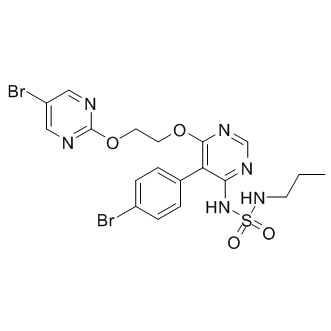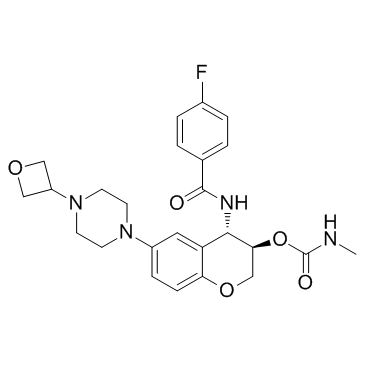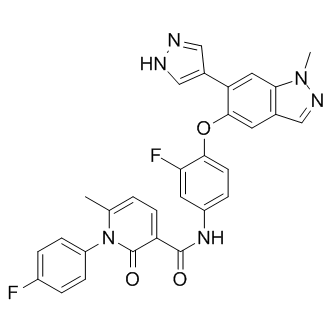 To enhance service speed and avoid tariff delays, we've opened a US warehouse. All US orders ship directly from our US facility.
To enhance service speed and avoid tariff delays, we've opened a US warehouse. All US orders ship directly from our US facility.
| Cat. No. | Product Name | Field of Application | Chemical Structure |
|---|---|---|---|
| DC5069 | Enzalutamide (MDV3100) Featured |
MDV3100 is an androgen-receptor (AR) antagonist with IC50 of 36 nM.
More description
|

|
| DC7194 | MDL 29951 Featured |
MDL-29951 is a novel glycine antagonist of NMDA receptor activation (Ki=0.14 mM, [3H]glycine binding) in vitro and in vivo.
More description
|

|
| DC9297 | MDK-5220(Orexin-2 receptor agonist) Featured |
MDK-5220(Orexin-2 receptor agonist) is the first selective nonpeptidic orexin 2 receptor (OX2R) agonist (OX2R EC50 = 0.023 μM, Emax = 98%; OX1R EC50 = 1.616 μM, Emax = 100%)
More description
|

|
| DC7743 | Mdivi-1 Featured |
Mdivi-1 is a selective cell-permeable inhibitor of mitochondrial division DRP1 (dynamin-related GTPase) and mitochondrial division Dynamin I (Dnm1) with IC50 of 1-10 μM.
More description
|

|
| DC10120 | MC-Val-Cit-PAB Featured |
MC-Val-Cit-PAB, also known as MC-Val-Cit-PAB-OH, is a cathepsin cleavable ADC peptide linker. MC-Val-Cit-PAB is useful for making ADC conjugate (antibody-drug conjugate). FDA approved drugs such as brentuximab vedotin used this linker.
More description
|

|
| DC5128 | MC1568 Featured |
MC1568 is a class II (IIa) HDAC inhibitor selective for HDAC4 and HDAC6
More description
|

|
| DC7193 | MBX-2982 Featured |
MBX-2982 is a selective, orally-available GPR119 agonist for the treatment of type 2 tiabetes.
More description
|

|
| DC22297 | Marmesin Featured |
Marmesin is a coumarin originally isolated from the mature bark of A. marmelos.
More description
|

|
| DC9693 | Madrasin Featured |
Madrasin inhibits pre-mRNA splicing in vitro and modify splicing of endogenous pre-mRNA.
More description
|

|
| DC9741 | Mad2 inhibitor-1 (M2I-1) Featured |
Mad2 Inhibitor-1 (M2I-1) is a small molecule protein-protein interaction inhibitor targeting the mitotic spindle assembly checkpoint.
More description
|

|
| DC1012 | Macitentan (Actelion-1,ACT-064992) Featured |
macitentan (Actelion-1, ACT-064992) is an orally active, non-peptide dual endothelin (ET)A/B receptor antagonist with IC50 of 0.5 nM/391 nM.
More description
|

|
| DC10751 | M2698 Featured |
M2698 is a potent dual-inhibitor of p70S6K and Akt that affects tumor growth in mouse models of cancer and crosses the blood-brain barrier.
More description
|

|
| DC8478 | M 344 Featured |
M 344 enhances the sensitivity of human squamous carcinoma cells to radiation and promotes cell cycle arrest and apoptosis in human endometrial cancer and ovarian cancer cells (ED50 = 2.3 μM).
More description
|

|
| DC10508 | Lys05 Featured |
Lys05 is a new lysosomal autophagy inhibitor which potently accumulates within and deacidifies the lysosome of both cells and tumors, resulting in sustained inhibition of autophagy and tumor growth.
More description
|

|
| DC5036 | LY-411575 Featured |
LY411575 is a potent γ-secretase inhibitor with IC50 of 0.078 nM/0.082 nM (membrane/cell-based), also inhibits Notch clevage with withIC50 of 0.39 nM.
More description
|

|
| DC7192 | LY-404039 Featured |
LY404039 is an inhibitor for mGluR1(Ki=149 nM) and mGluR2(Ki= 92 nM), which can also inhibit dopamine receptor.
More description
|

|
| DC6305 | LY364947 Featured |
LY364947 is a potent ATP-competitive inhibitor of TGFβR-I with IC50 of 59 nM, shows 7-fold selectivity over TGFβR-II.
More description
|

|
| DC2018 | LY335979 (Zosuquidar 3HCl) Featured |
LY335979 (Zosuquidar) is a potent modulator of P-glycoprotein-mediated multidrug resistance with Ki of 60 nM.
More description
|

|
| DC7526 | Varespladib Featured |
LY315920 (Varespladib) is a potent and selective human non-pancreatic secretory phospholipase A2 (hnsPLA) inhibitor with IC50 of 7 nM,. Phase 3.
More description
|

|
| DC7884 | LY310762 Featured |
LY310762 is a 5-HT1D receptor antagonist with Ki of 249 nM, having a weaker affinity for 5-HT1B receptor.
More description
|

|
| DC7210 | LY-303511(Nv-128) Featured |
LY303511, an inactive analogue of LY294002, is a mTOR inhibitor that did not inhibit PI3-K.
More description
|

|
| DC10219 | LY3023414 Featured |
LY3023414 is an oral ATP competitive inhibitor of the class I PI3K isoforms, mTOR and DNA-PK.
More description
|

|
| DC8344 | LY3009120 Featured |
LY3009120 is a potent and selective pan-RAF inhibitor with potential anticancer activity.
More description
|

|
| DC23688 | LY-3000328 Featured |
LY 3000328 is a potent and selective Cathepsin S (Cat S) inhibitor with IC50s of 7.7 and 1.67 nM for hCat S and mCat S, respectively.
More description
|

|
| DC7191 | LY-2940680(Taladegib) Featured |
LY2940680 binds to the Smoothened (Smo) receptor and potently inhibits Hedgehog (Hh) signaling.
More description
|

|
| DC5053 | LY2886721 Featured |
LY2886721 is an BACE inhibitor used for the treatment of Alzheimer's Disease.
More description
|

|
| DC7019 | LY-2874455 Featured |
LY2874455 is a novel and potent FGF/FGFR inhibitor.
More description
|

|
| DC5062 | LY2835219(Abemaciclib) Featured |
LY2835219 is an orally available cyclin-dependent kinase (CDK) inhibitor that targets the CDK4 (cyclin D1) and CDK6 (cyclin D3) cell cycle pathway, with potential antineoplastic activity.
More description
|

|
| DC5180 | LY2811376 Featured |
LY2811376 is the first orally available non-peptidicβ-secretase(BACE1) inhibitor with IC50 of 239 nM-249 nM.
More description
|

|
| DC8586 | LY2801653 Featured |
LY2801653 is a potent, orally bioavailable, small-molecule inhibitor of c-MET kinase(Ki= 2 nM).
More description
|

|